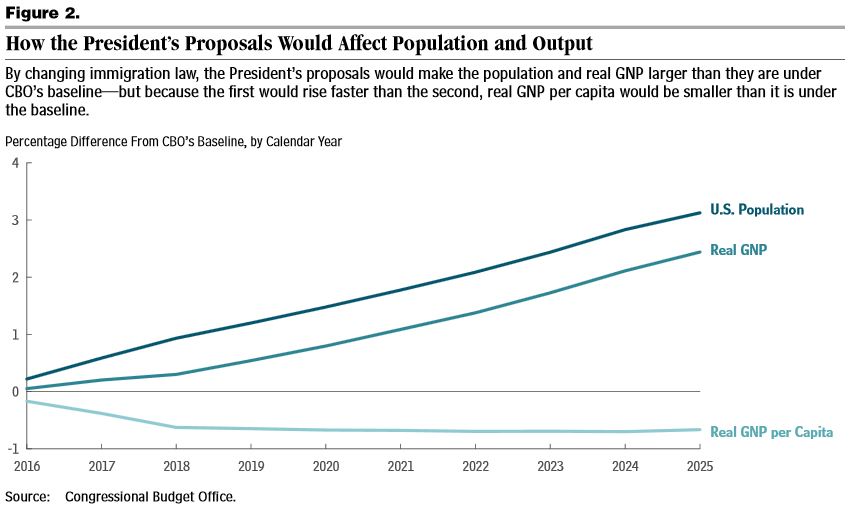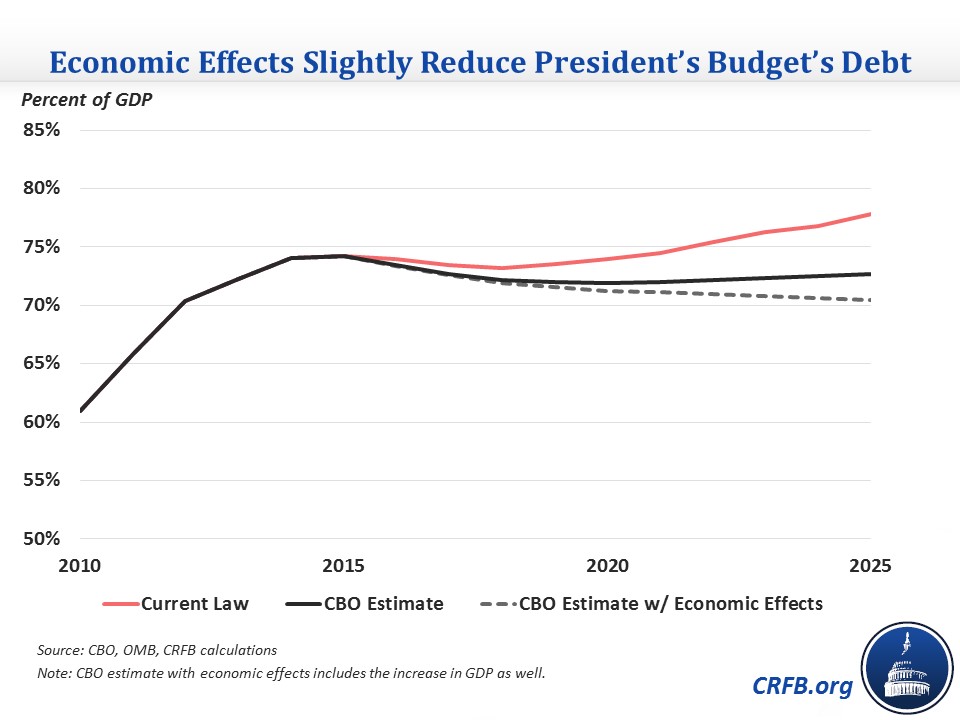Immigration Reform Drives Positive Economic Effects of the President's Budget
CBO released its estimate of the economic effects of the President's budget late last week, doing dynamic scoring for the President's budget. Like last year, CBO finds that the budget would mostly affect the economy through immigration reform. Overall, the budget would increase real GNP by 1.1 percent on average over the next ten years and by 2.4 percent in 2025 alone. At the same time, it would reduce real GNP per capita by 0.7 percent by 2025 since the increase in population from immigration reform would outpace the real GNP effects.

Since CBO's original estimate already took the labor market effect of immigration reform into account, the primary new information is an analysis of other ways the budget affects growth (including other effects from immigration reform). CBO's estimate lists changes to other economic factors, including short-term aggregate demand, marginal tax rates on labor and capital, national saving, and interest rates.
In the first five years, the effects other than immigration reform would slightly reduce economic growth because the budget's increased tax rates – raising labor tax rates by between 0.3 and 0.5 percentage points and capital tax rates by just under 2 percentage points annually – and reduction in aggregate demand would outweigh the increase in national saving from deficit reduction ($463 billion over five years). Over the following five years, the effects would turn slightly positive. The aggregate demand reduction would fade as the economy reaches its full potential, and the increased tax rates on labor and capital would be outweighed by the positive effects of deficit reduction ($1.4 trillion over ten years) and the boost in productivity from increased immigration.
Incorporating new economic effects into the budget increases deficits slightly by $36 billion over ten years. The effects increase the deficit from 2016 through 2022 but reduce it for the following three years. In terms of debt, the original CBO estimate showed debt declining from 74 percent of GDP in 2015 to 72 percent by 2020 then rising to 73 percent by 2025. Including the additional economic effects (meaning both the budgetary effects and the overall change in GDP) would result in debt declining slightly but continuously to just over 70 percent by 2025.

CBO also increased its estimate of the budget's savings from $1.2 trillion to $1.4 trillion, almost entirely due to the enactment of the physician payment law, which included a similar physician system as the President proposed and contained other smaller health policies that were in the budget. Because some of the President's proposals became law, those portions no longer count as costs in the budget.
In short, incorporating the economic effects would change the picture slightly, but it would only mean debt declining very slowly from a high level. As we have commented previously, the budget could go further to ensure a healthy long-term budget picture.

